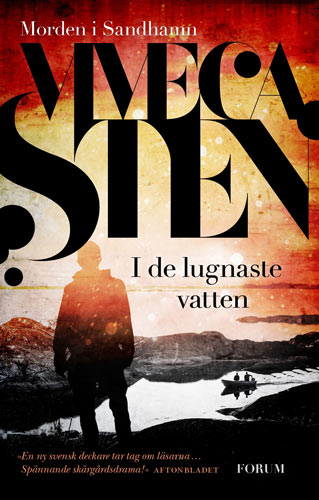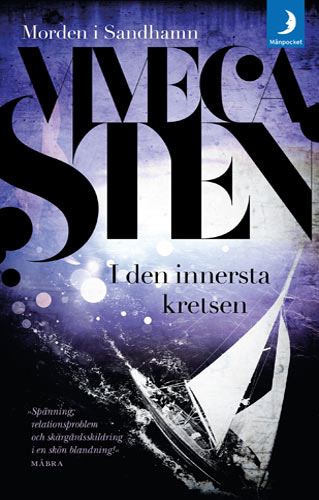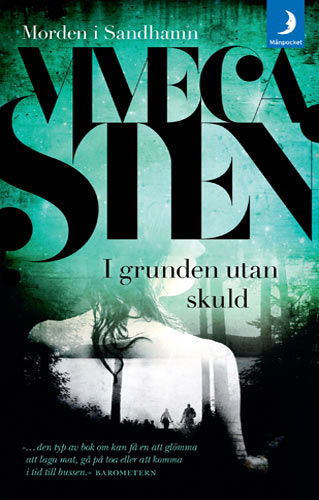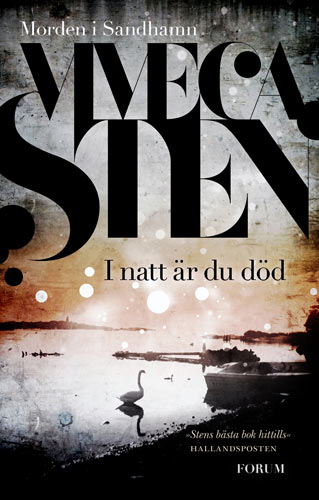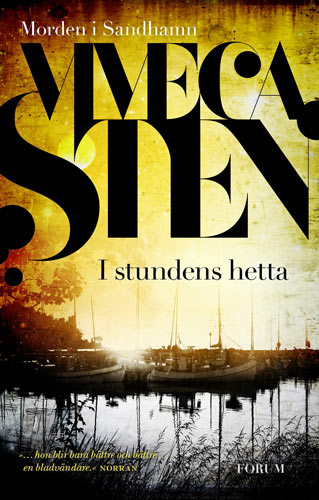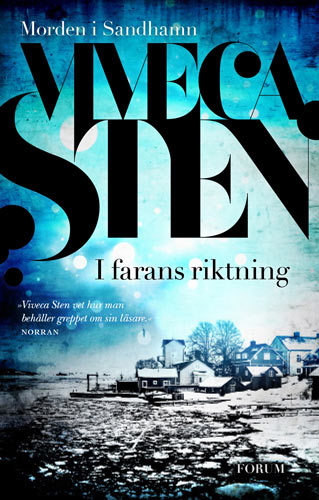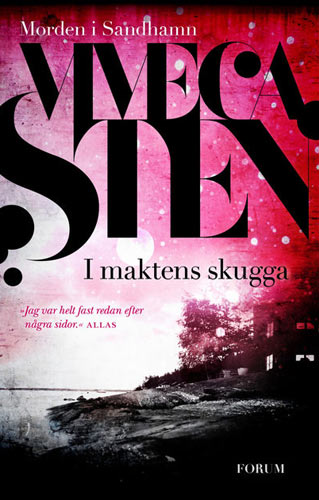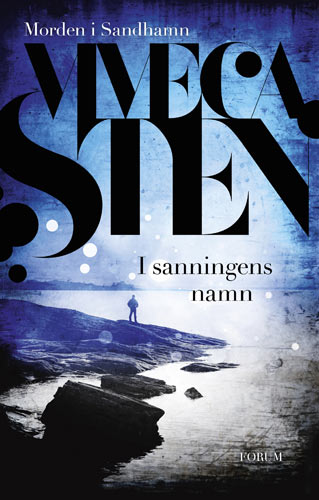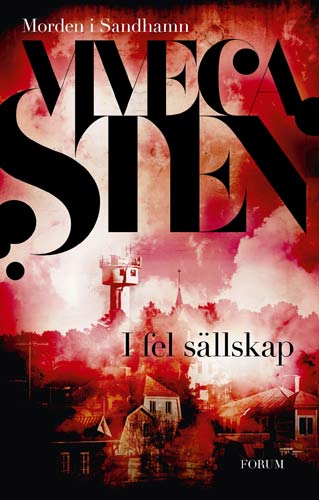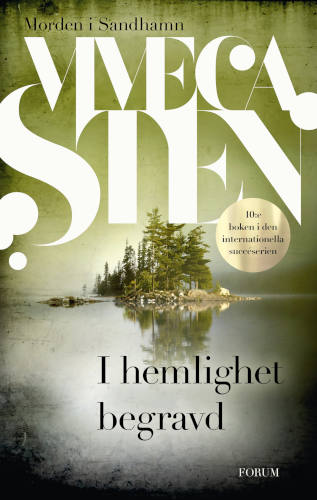Interview with Viveca
Introduction
Ezzulia.nl is a Dutch site where readers share their enthusiasm for good books in different genres, from literature to crime and fantasy. Information is given on the site and a lively forum is used to exchange ideas and opinions. On the site we see more and more Dutch authors participating in the discussions on the forum. In the interview section more than 250 interviews with authors are available including Swedish crime writers such as Liza Marklund, Camilla Läckberg, Lars Kepler and Jens Lapidus.
Link to our Dutch site: http://www.ezzulia.nl/
Kind regards, Ronald de Jong - Den här e-postadressen skyddas mot spambots. Du måste tillåta JavaScript för att se den.
October 2011
Interview
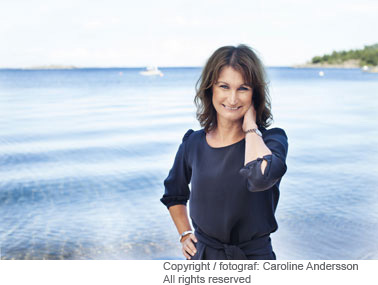
Recently the first book by the Swedish writer Viveca Sten was published in the Netherlands. The books is titled” Stille wateren” and is the translation of I de lugnaste vatten (2008).
For Ezzulia this debut is a good reason to ask the author some questions why a successful lawyer starts writing crime novels, what connects her to the island Sandhamn and her main characters Nora Linde and Thomas Andreasson.
On writing
Your first crime novel in Sweden was published in 2008 and since then you have been publishing each year a new book. This year the fourth book I natt är du död was published.
Can you tell our Dutch readers, who is Viveca Sten?
I come from Stockholm, I have three children aged 13, 16 and 19 and I have been happily married for more than 20 years to a fellow student whom I met in law school. Oh, we also have an adorable cat. I have spent all my summers on the island of Sandhamn, since I was a baby. My great grandfather, Oscar, bought our family house their in 1917. I have worked as a business lawyer since I graduated from law school (Stockholm University) in 1986 and until recently I was the head f the legal department with 35 lawyers at the Swedish and Danish post.
You have a very successful legal career as the General Counsel of the Swedish and Danish Post. How can that be combined with writing a new crime novel each year?
I am an excellent administrator and know how to organize things both at work and at home, although I also have my moments when everything falls apart and I wonder if I am totally crazy to do all the things that I do. I have, however, recently left my position as head of the legal department at the Swedish-Danish post, so maybe things will become a little easier now. But knowing myself I will without doubt fill my time to the brim again (laughter).
You have written several books before you made your debut to crime fiction. Which way can writing a book about “Outsourcing of IT-services” help you write a crime novel?
Although my legal books weren’t exactly bestsellers if you compare them to the crime novels, they did teach me I did know something about the process of writing and how to structure a book. But to be honest, writing fiction turned out to be much more difficult than writing non-fiction, but also much more fun. I can always make up things as I go along in the crime novels, something which is a no-no in a non-fiction where everything has to be researched and substantiated by other sources. I don’t think that I will ever write a legal non-fiction book again.
You now have written four crime novels. Can you explain how the writing process works for you. E.g. do you use a blueprint or synopsis.
I always write a synopsis, usually I write a couple at a time, so I know what will happen one or two books ahead. As a lawyer, I like structure, which is probably why I like to write crime novels which have to follow a certain format and logic.
What is the ultimate challenge for you in writing a crime novel?
To make it better than the previous one! I always want to surpass myself, I can’ t help it. It´s the competition instinct which I can’t get rid of.
Have you got an ultimate reader in mind for whom you write?
No, not at all.
We hear from a lot of writers that they started writing crime fiction after reading a lot of crime fiction. You started reading crime fiction later in your life, with a book by Elizabeth George as a first. What attracted you to the genre?
The book was a gift from my son’s godparents. I read it – and was hooked. I got all of Elizabeth Georges books and then I read Henning Mankell straight through. It was actually a bit of a blessing because I discovered all these wonderful series which has already been published so I didn’t have to wait for the next one to be published.
Was the challenge to see if you could also write such a book the motivation to write your first book?
One of my strongest driving forces is that I want to challenge myself. I am always curious about what I can achieve. This is a pattern that has manifested itself during my entire life.
Your books have the same atmosphere as those of your colleagues Camilla Läckberg and Mari Jungstedt. Are you familiar with their books and do you agree that style and atmosphere bear some resemblance?
That’s quite right. We write about relations and people as much as the crimes themselves. Our books also take place in villages close to water. We are all friends (Sweden is a very small community) and we joke about it.
A lot of media state that Sjöwall and Wahlöö started the crime wave from Sweden. Since you started reading crime fiction later in your life did you have the chance to read their books?
I have all of their books!
On Sandhamn and the main characters
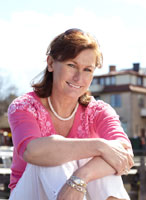
Fotograf Peter Knutson
Sandhamn is a relative small island part of the Stockholm archipelago. The island has a small number of permanent inhabitants and a large number of tourists and owners of summerhouses.
It seems that your family owns almost for a hundred year a summerhouse on Sandhamn. Why was this small island the perfect setting for your books?
I believe that it is the mix between the idyllic island and the terrible crimes that captures the readers. There is an interesting contrast in that setting, which is intriguing to a writer and allows for interesting stories to be told. In addition, Sandhamn has a long history. The island was donated to a nunnery by Swedish king Magnus Ladulås as early as 1282. In the 17th century it became a center for naval pilots when trade increased between Sweden and northern Europe, Germany and the Baltic countries. When the Swedish Royal Yachting Society established themselves on the island in 1897, in the presence of King Oscar II, this further added to the island’s fame. The island has a rich history which provides a lot of inspiration to me.
What makes Sandhamn different from the islands your colleague-writers use like Gotland by Mari Jungstedt and Anna Jansson and Öland by Johan Theorin?
It is so much smaller! Only 110 inhabitants during the winter time and it only takes about 2,5 hours to walk around the island. On both Gotland and Öland you have tens of thousands of people and there are many different villages scattered throughout the island.
In this first book you describe a lot of features and buildings of Sandhamn. Was this necessary to make a believable setting for this and the comings books?
Good point. Absolutely, I felt that this was necessary in order to establish a picture of the island in my reader’s minds. Everything I describe exists, which only a few exceptions such as Villa Brand and Noras house. I often hear that I paint a picture to my readers and the most beautiful compliment I have ever received was from a blind man who has a summer house on the island. He had listened to my audio books and he said to me: “I have lived here for decades without knowing what it looks like, but thanks to you I can now see the island for myself.”
When you provide the readers with so much detail there is a risk that the attention is distracted and the suspense could be the victim. How did you make sure that you didn't feed the readers too much information about the setting?
No idea. But I seem to recall that my editor made me delete some of it … (laughter)
In this first book you introduce the two main characters Nora Linde, who is a bank lawyer and Thomas Andreasson, a divorced policeman from Nacka police station. Who are they and what makes them tick?
The main characters are Thomas Andreassson, a detective inspector who has recently divorced following the death of his infant daughter, his first-born. His childhood friend Nora Linde has a summer house on Sandhamn and she assists Thomas in his investigation while she is struggling with her own marital problems. She is married to Henrik, who has little patience with his wife and her own careeer ambitions. If you have read anything by the famous Norwegian author Henrik Ibsen, you will understand why Nora is called Nora and why Henrik is called Henrik...
Nora is married to a rather selfish doctor who spends all of his free time on a boat. Why is Nora, who is also very ambitious, putting up with such egocentric behavior?
She is very focused on keeping her marriage together for the sake of her children. Nora is a bit old-fashioned, but she has slowly drifted into a a very conservative pattern in her marriage. If you had asked Nora about this when she was first married, she would not have believed that she would end up in a marriage where the balance between her and her husband was so skewed. She believes in equality and sharing, and doesn’t live up to her own ideals, which makes her both unhappy and feeling guilty.
Thomas is a policeman but not in charge of the investigation of the suspicious death of Krister Berggren. Where do you get you necessary information about the way the police operates to create a convincing policeman?
I have several people in the police corps that I consult with frequently. We meet, e-mail and speak on the telephone all the time. To give you an example, I spent a whole weekend in June following the police around on Sandhamn, during the Swedish holiday Midsummer’s Eve, when I was doing research for my fifth novel, which will be published in Sweden in July 2012.
Often in crime fiction there is a main character and a sidekick. Is this also the case with Nora and Thomas or are both characters equally important to the book?
I believe that both characters are equally important.
Can you tell us how you use the characters Nora and Thomas to contribute to the suspense of the books. Or in other words how to avoid that your characters will become boring to the reader after a few books?
The readers lives with them and follows them throughout the series. I believe that this engages my audience. I get a lot of e-mails from readers regarding Nora’s marriage.
A modern version of a classical detective including a red herring as written by authors such as Agatha Christie. Can you tell right or wrong classification and why?
How hard is it to keep the stories realistic to the readers when in small closed communities like Fjällbacka and Sandhamn in each book a few dead bodies turn up?
I believe that there is a sort of silent contract between the reader and the writer which allows for deviations from certain logic. In real life, very few people would stumble upon one dead body after another, at least not without needing to go into therapy for several years. But in fiction, the reader will accept it due to this ”contract”.
Stieg Larsson gave his character journalist Michael Blomkvist a small summerhouse on Sandhamn. How crowded will Sandhamn become as a result of all those fictional inhabitants?
There is still room for more!
Are the inhabitants of Sandhamn very pleased with the fact that you bring them each year several murders? :-)
So far, they have not minded. I receive a lot of support from my neighbours and friends on the island. Most of the inhabitants have read them and it is wonderful how proud people are.
On the book Stille wateren (I de lugnaste vatten)
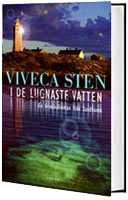
What is the main message that your readers should distillate from this book. A lot of Scandinavian writers in the tradition of Sjöwall and Wahlöö use their books also to discuss social topics in society. Have you also chosen to do this in your book I de lugnaste vatten?
I have not chosen to use my books as a vehicle for political opinions. I am not a very political person, maybe it is a result of having worked as an objective lawyer for so long. Having said that, one of the things I do advocate strongly in Stille wateren is how important it is to show respect for the nature in the archipelago. I also want to protect the old traditions on the islands, such as allowing free access to the beaches and not building private fences. Visitors have been able to wander around the island for centuries and this is how it should be also in the future.
Why is crime fiction you think a good vehicle to discuss these topics?
It is very wide spread and reaches a large audience.
Can you say that this is one of the factors that make Swedish crime fiction so successful also outside Scandinavia?
Possibly. I find it difficult to pass judgement on that.
The book I de lugnaste vatten has been filmed for Swedish television. Did you participate in this e.g. by reviewing the script?
Absolutely. I read several versions and also visited the production site. My children participated as extras in the film and so did I, although you can hardly see me. But my sons play children on the beach and my daughter, who was sixteen at the time, is a “beach babe” in a pretty blue bikini.
On your site we can see the actors that have been selected for the for the roles of Nora (= Alexandra Rapaport) and Thomas (= Jacob Cedergren). How strange is it when you see these actors and compare them with the images of Nora and Thomas you see before you when you write?
Less strange than I thought. When I write I do not see them in front of me at all. Both are excellent and famous actors and I was very happy to have such established names in my film.
The rights for the second book have been bought by the Dutch publisher and the book is being translated and shall be published in 2012. Why should the reader first read this book I de lugnaste vatten?
That’s easy. Because the identity of the killer in Stille Wateren is revealed in the second book!
Last question - you have sold, just like your female colleague Camilla Läckberg and Mari Jungstedt a lot of copies of your books in Sweden. For whatever strange reason only a limited number of female writers are winners of the prize for best Swedish crime novel. Have you any idea what the Deckarakademin is missing in your books?
I haven’t got a clue. But I would love to be nominated at least once in my life (laughter).
Thanks on behalf of the Dutch readers of your books and the visitors of our site Ezzulia.






























